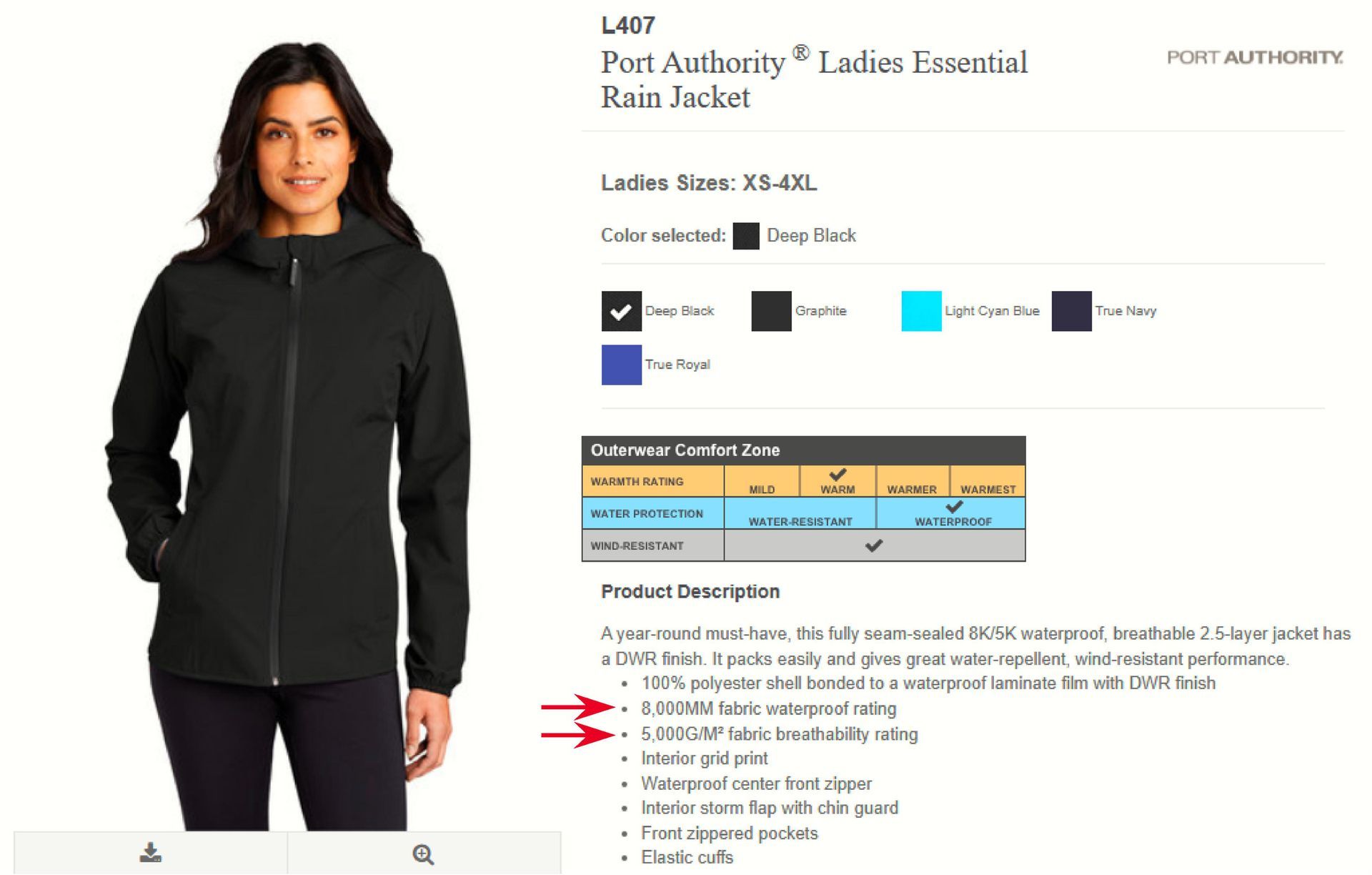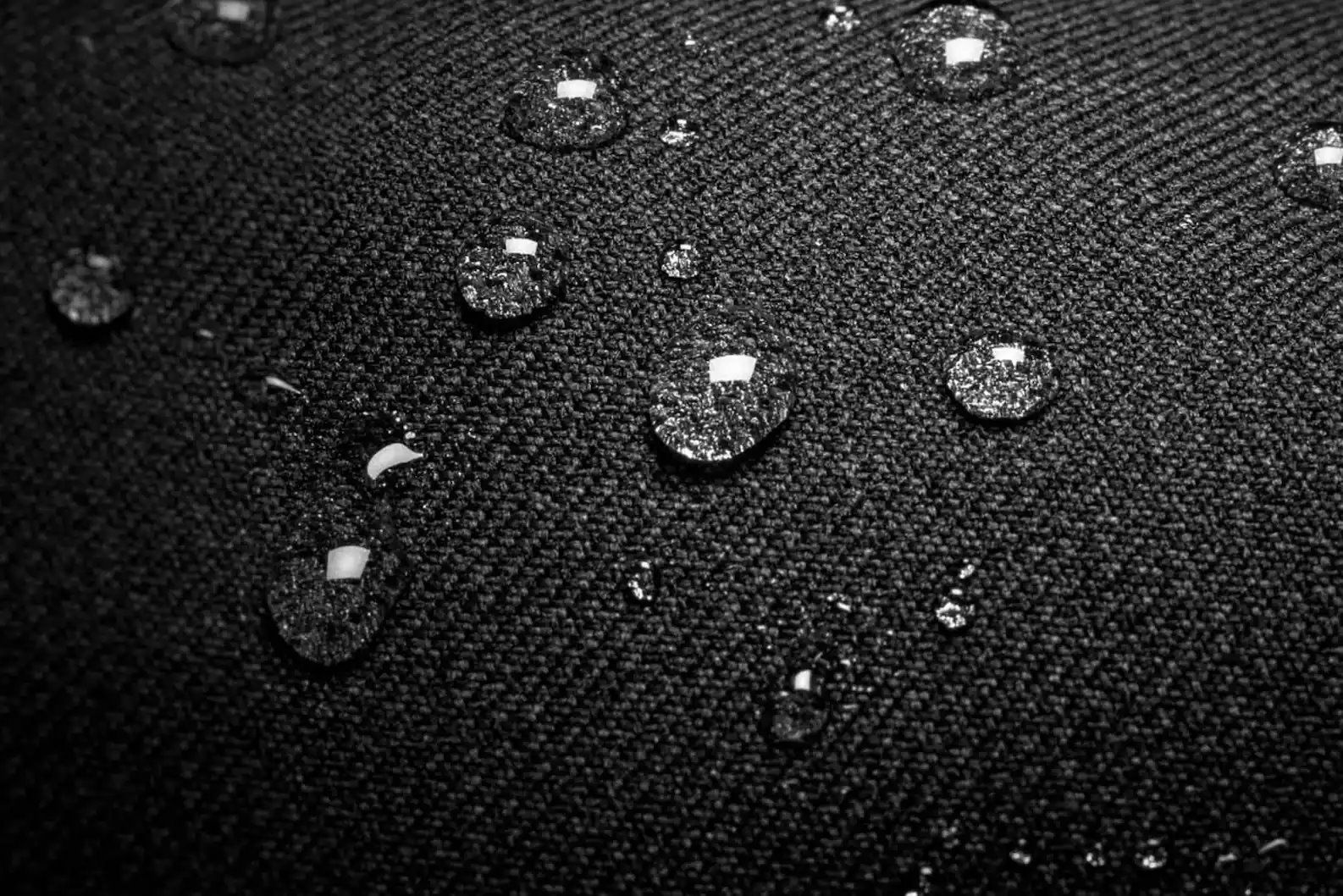The Right Gear for the Job
- Apparel Facts & Information -
Showoffs has put together some information to take in account when selecting the type of Garment that will work best for your needs. If you have more questions on any of our apparel products please reach out to us so we can help you.
The Complete Guide to Outerwear Breathability Ratings
When selecting new outerwear there is an infinite number of colors, styles, and features, but there are really two key technical considerations: the waterproof rating and the breathability rating. Because regardless of what a jacket looks like, if it doesn’t keep you warm and dry then it is not doing its job.
The breathability rating of a piece of outerwear is a quantification of its ability to move moisture away from the body during periods of activity. Coupled with a waterproof rating, these two measurements provide a general estimate of performance that you can use to decide whether a piece of technical outerwear will work for your needs.
But breathability ratings are kind of complicated. What exactly does the rating measure? How is it calculated? So, we sat down and put together this guide to answer some of the most common questions.
What is Breathability?
When you're active, your body generates heat. Whether you are indoors at room temperature or outdoors in sub-zero temperatures, you create moisture vapor when sweat evaporates off of your body.
In the context of technical outerwear, breathability refers to the passage of moisture vapor from your body through the material of the jacket or apparel to the outside. This moisture transmission is what keeps you dry. In general, waterproofing and breathability work together to keep you comfortable when riding.

Breathability vs. Wicking.
Breathability describes a fabric's ability to allow moisture to escape, based on its construction (weave and pores). Wicking describes a fabric's ability to absorb moisture from the skin and bring it to the surface, based on the fiber itself. It's a distinction worth making for this discussion.
Breathability Ratings Explained.
Fabric performance ratings are determined by brands, manufacturers, and independent testing facilities and most top manufacturers have aligned to a standard rating scale that includes two numbers: waterproofing and breathability. But while the scale may have been standardized, the methodologies for determining the actual ratings can vary based on the testing facility and conditions. Because of this, shoppers should consider breathability ratings more as general guidance than concrete recommendations.
Example jacket:
- 8,000MM fabric waterproof rating
- 5,000G/M² fabric breathability rating

Measuring Waterproofing.
There are a few approaches for determining waterproof ratings, but most involve placing a 1" x 1" square tube over a swatch of fabric and filling it with water until it begins to seep through the fabric, using the height of the water in the tube (in millimeters) as the waterproofing measurement.
Waterproofing vs. Water Resistant.
The right gear for you is dependent on the four factors.
- Waterproof is better than water resistant. If you know that you will be spending time in heavy rain or wet snow and hate getting wet, investing in more waterproof outerwear is a good bet.
- Quality outerwear is both weather resistant AND breathable. If you plan to be very active and sweat in your outerwear, ensure that your jacket has a higher breathability rating.
- The more water resistant a piece of outerwear is, the more expensive it will be. Get the highest waterproofing and breathability that makes sense for your budget.
- Waterproof and water resistant fabrics must often be re-treated. If you're starting to get wet while wearing your waterproof gear, consider retreating instead of replacing.

Measuring Breathability.
Measuring breathability is inherently difficult, as factors like temperature, humidity, and atmospheric pressure are most certainly not standardized across manufacturers and testing facilities. With that said, the most common breathability tests involve placing a one square meter swatch of fabric over a container of liquid (typically a simulated sweat solution like calcium chloride), leaving the container in a controlled environment for 24 hours, and then measuring the weight of the container to determine the amount of liquid (in grams) that was able to pass through the fabric. This is known as the Moisture Vapor Transmission Rate, or MVTR.
In our example, the jacket has a breathability rating of 5,000g.
The MVTR Breathability Scale
- 5,000g – 10,000g: Breathability in this range works well for moderate outdoor activity that doesn’t involve a high level of exertion.
- 10,000g – 15,000g: This level of breathability will keep you comfortable during more intense aerobic exertion when working, riding.
- +15,000g: Very high breathability ratings are designed for the most strenuous outdoor performance and are engineered to deliver comfort during periods of high exertion.
What level of Breathability is Best?
While more breathability sounds like it would always be better, the truth of the matter is that the right amount of breathability depends on the situation. The breathability that you need is all based on the performance necessary for the level of activity you plan to do on a given day. For many riders, having one jacket for the entire season meets their needs, but for others, having a few different outerwear options for different weather and levels of activity is the way to go. It’s important to note that this decision is largely based on personal preference, so review these breathability ratings again and then go find the perfect outerwear to keep you comfortable all season long.
